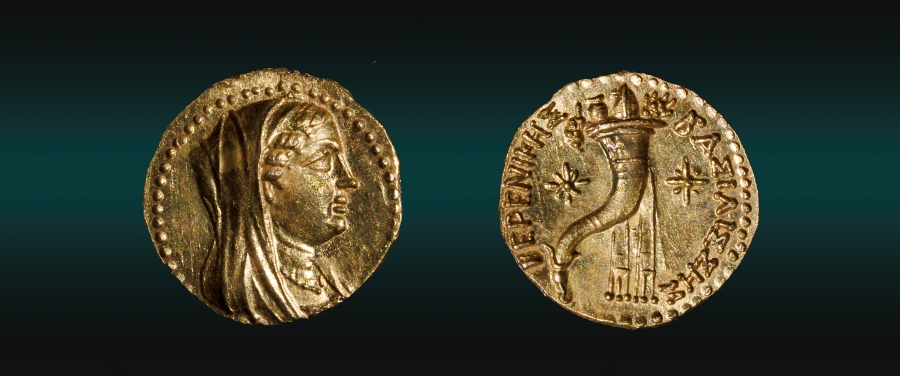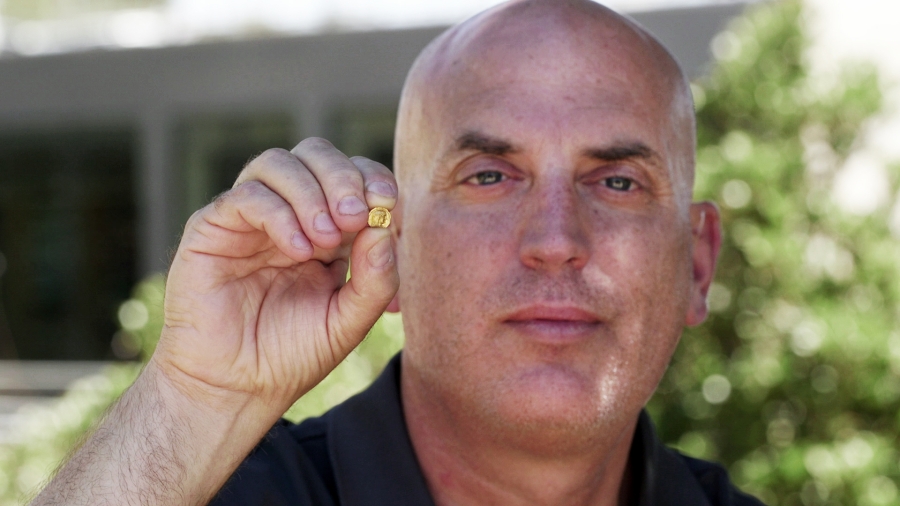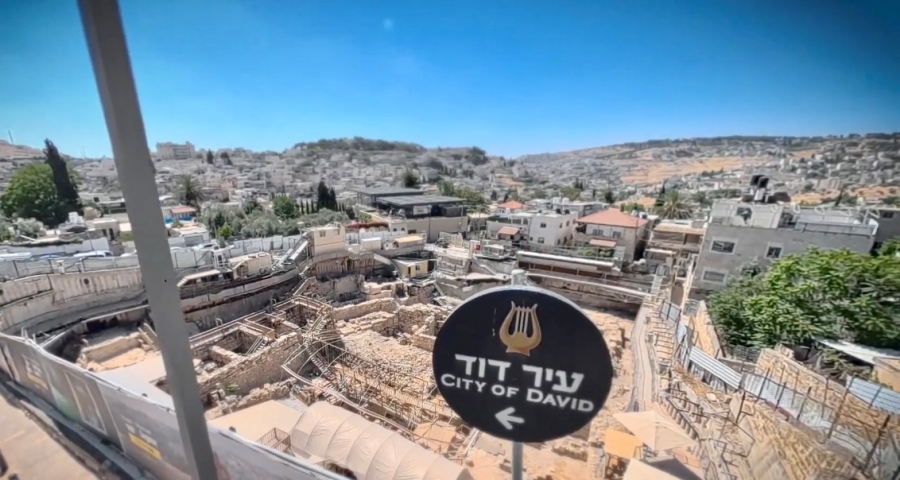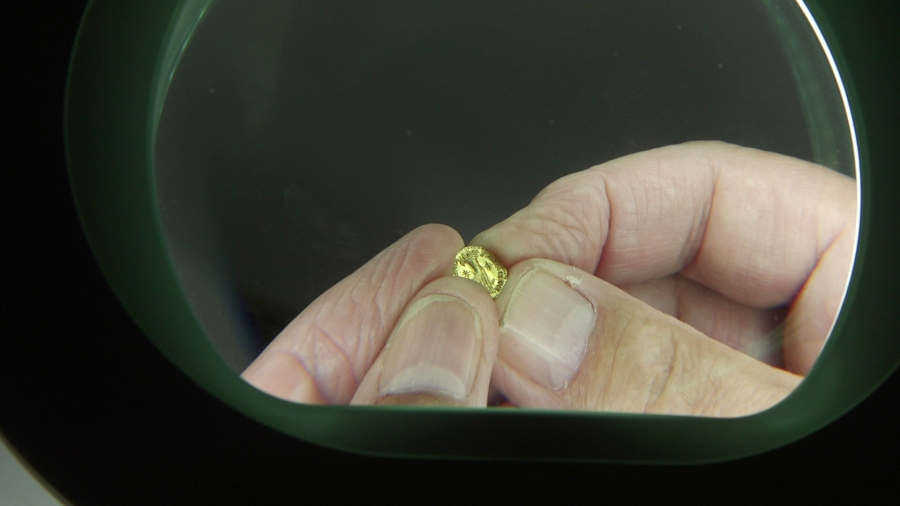Rare Gold Coin of Egyptian Queen Berenice II Discovered in the City of David

This small, unique coin, made of pure gold, was possibly minted as part of a special series to pay donatives to soldiers. Only about 20 such coins are known to exist, and this is the first one discovered in a controlled excavation. Until now, research has commonly assumed that Jerusalem after the destruction of the First Temple was a small, marginal, and economically weak town. The coin, together with additional findings from the excavation, sheds new light on the city during the Hellenistic period.
A tiny but extremely rare gold coin, showing the portrait of the Hellenistic Queen Berenice II of Egypt (246–222 BCE), was discovered in the Givati Parking Lot excavations in the City of David National Park, conducted by the Israel Antiquities Authority.

The coin is a small denomination quarter-drachma, made of pure gold (99.3%), dated to 246–241 BCE, minted for Queen Berenice II, during the reign of her husband Ptolemy III, the Hellenistic ruler of Egypt. Only twenty of these rare coins are known to exist, and this is the first coin ever found in a proper archaeological context.
The obverse of the coin depicts Berenice as a Hellenistic queen, wearing a diadem and veil, with a necklace around her neck. The reverse shows a cornucopia, an ancient symbol of prosperity and fertility, flanked by two stars. A surrounding Greek inscription reads “of Queen Berenice.”
The coin was discovered during soil sifting adjacent to the excavation area by Rivka Langler, an excavator at the Givati Parking Lot. “I was sifting the excavation soil when suddenly I saw something shiny. I picked it up and realized it was a gold coin. At first, I couldn’t believe what I was seeing, but within seconds, I was running excitedly through the excavation site. I’ve been excavating in the City of David for two years, and this is the first time I’ve found gold! I always saw other excavators discovering special finds, and I kept waiting for my moment – and now it finally arrived!”

“As far as we know the coin is the only one of its kind ever discovered outside Egypt, which was the center of Ptolemaic rule,” said Dr. Robert Kool, Head of the Numismatics Department at the Israel Antiquities Authority, and Dr. Haim Gitler, Chief Curator of Archaeology and Curator of Numismatics at the Israel Museum, who studied the coin.
The Greek inscription “BASILISSES” – “of the Queen” – is rare on coins of this period. Queen Berenice appears here not as a consort of the king, but possibly as a ruler in her own right. Women appeared occasionally on Ptolemaic coins for nearly 300 years (305–30 BCE), the most famous of whom was Cleopatra. However, this is one of the earliest cases of a Ptolemaic queen appearing on a coin with such a title during her lifetime – possibly evidence of her exceptional status and political power.
The coin was likely minted in Alexandria, Egypt, perhaps to serve as a bonus for Egyptian soldiers returning from the Third Syrian War, a conflict between the two dominant Hellenistic powers at the time in the East, the Ptolemaic Kingdom of Egypt and the Seleucid Kingdom of Syria. Dr. Kool and Dr. Gitler emphasize: “Only about 20 such coins are known, and this is the first ever uncovered in a controlled archaeological excavation, making it a find of extraordinary scientific importance.”

According to Yiftah Shalev, director of the excavation on behalf of the Israel Antiquities Authority, together with Efrat Bocher of the Center for the Study of Ancient Jerusalem: “The fact that such a rare gold coin was discovered in Jerusalem during the time when it was under Ptolemaic rule provides a fascinating glimpse into the city’s status in those years and possible relations between the Jerusalem authorities and the Ptolemaic Empire. The coin carries broad implications regarding Jerusalem’s development after the destruction of the First Temple. Until now, the prevailing scholarly view was that post-586 BCE Jerusalem was a small, marginal, economically weak town. The coin – alongside additional finds from the mid-3rd century BCE – begins to shed new light on this: Jerusalem seems to have begun recovering already during the Persian period and grew stronger under Ptolemaic rule. Jerusalem in the centuries after the destruction of the First Temple was not desolate and isolated, but rather a city in the process of renewal, reestablishing ties with the dominant political, economic, and cultural centers of the period.”
Article: City of David and Israel Antiquities A












